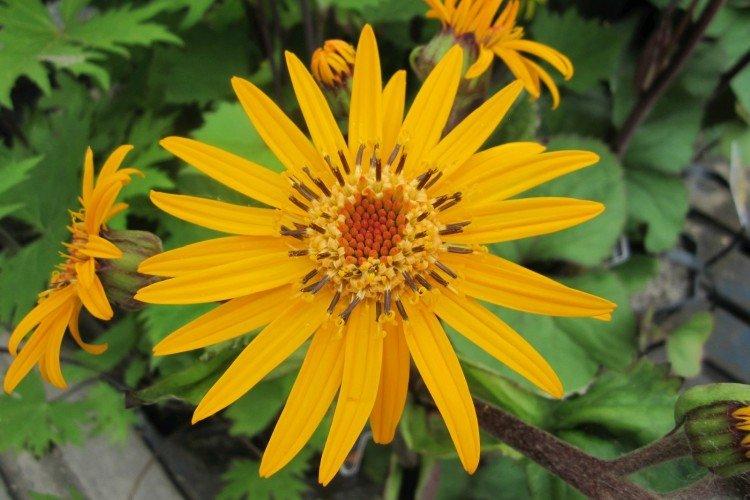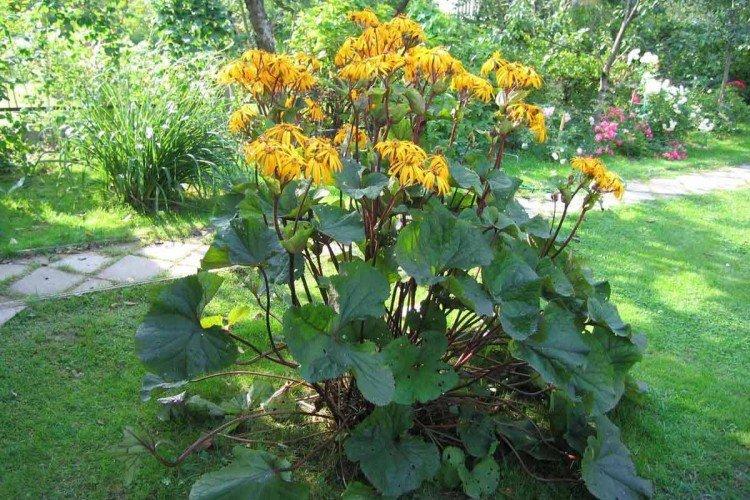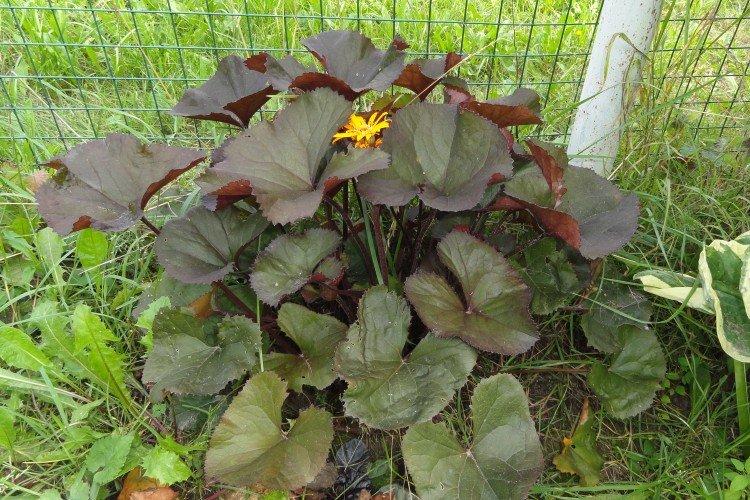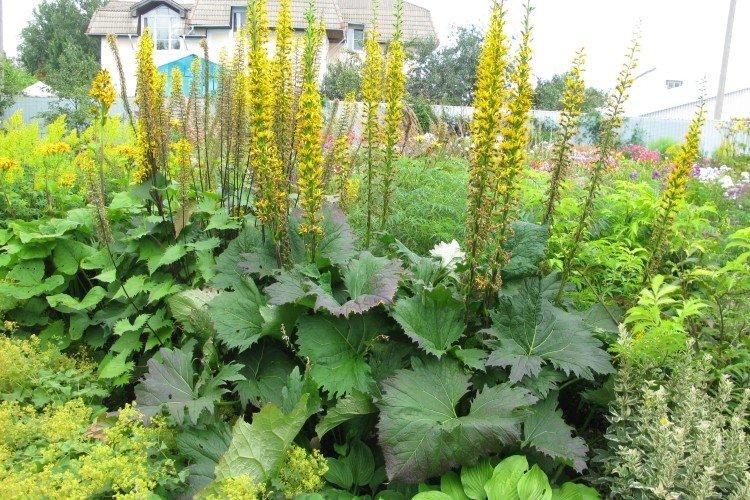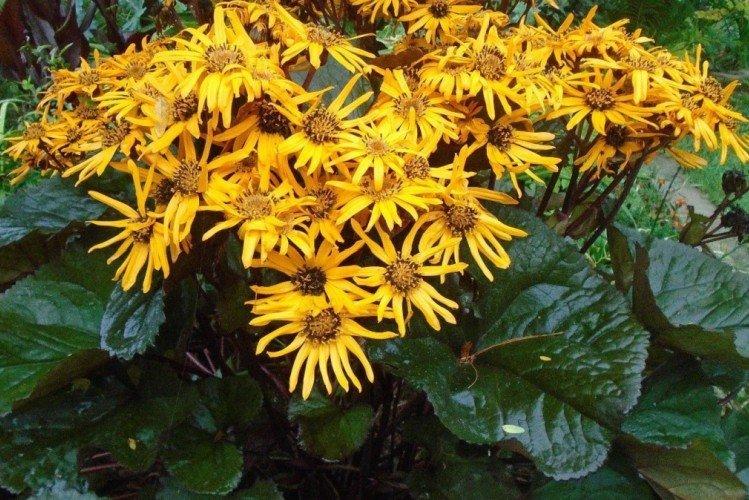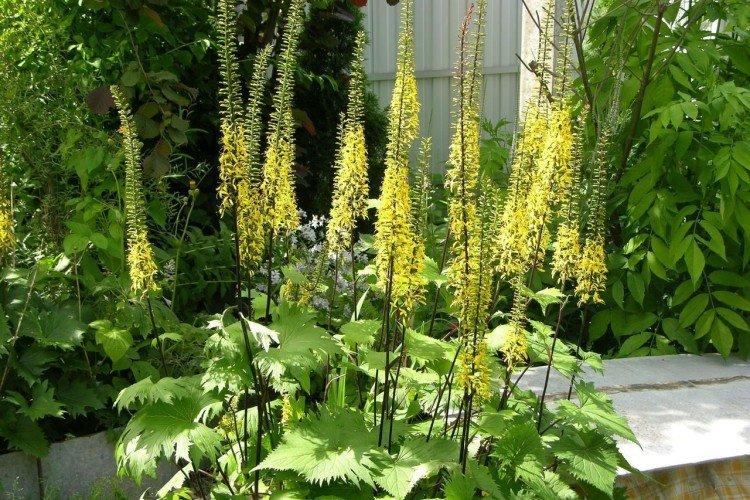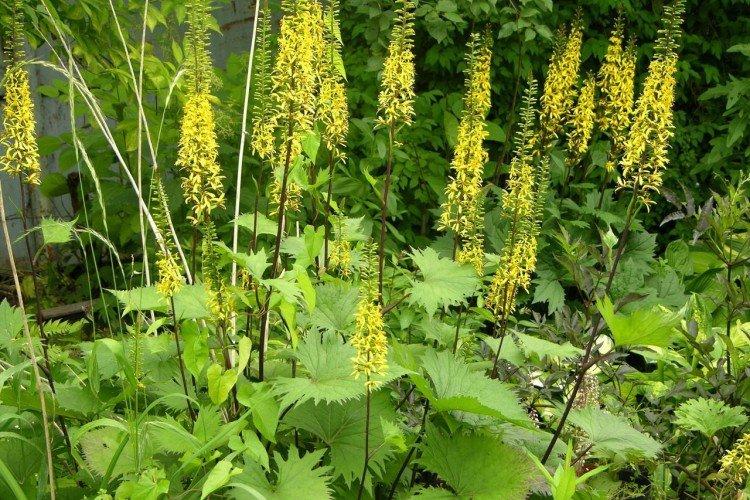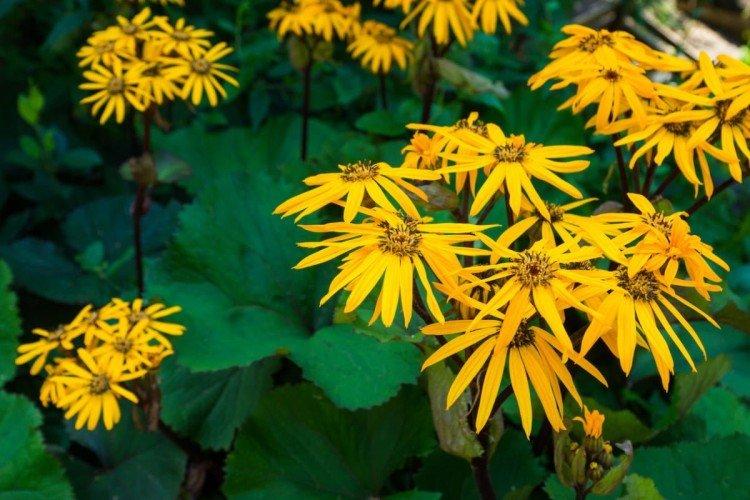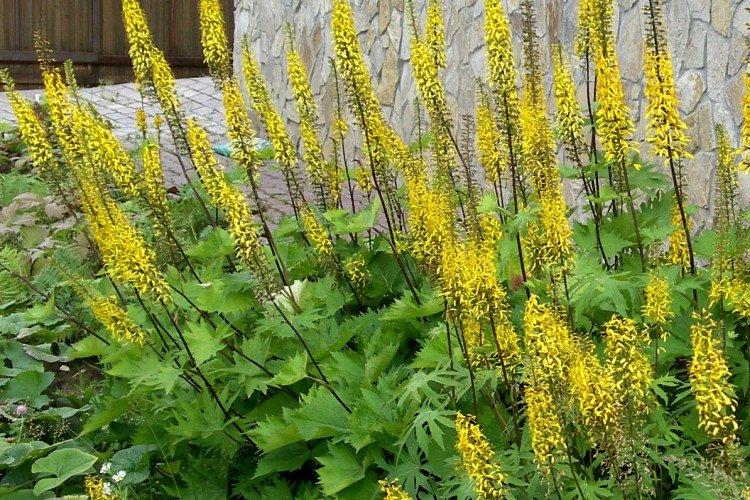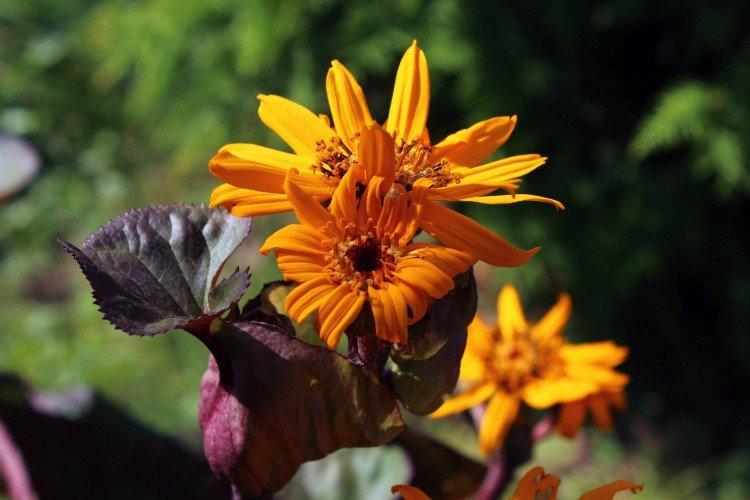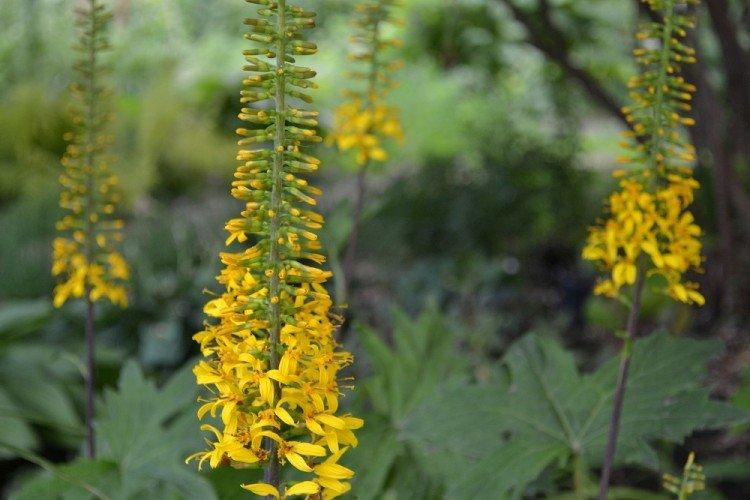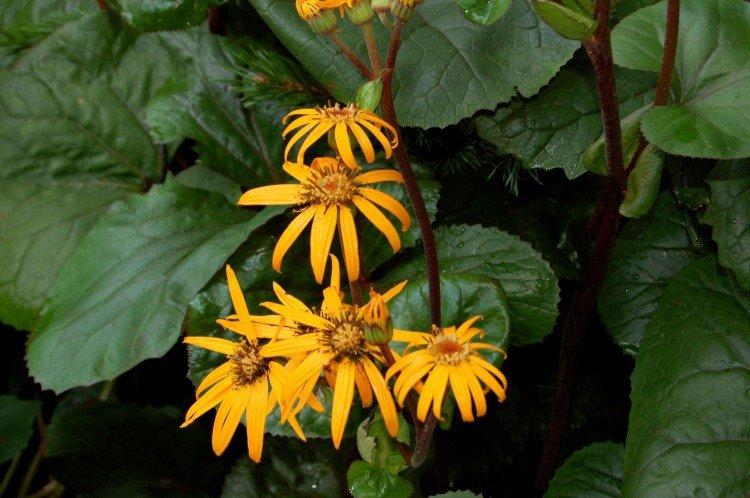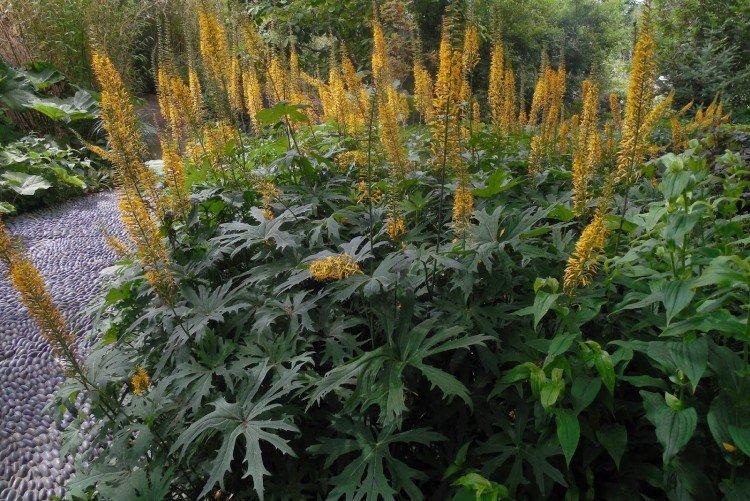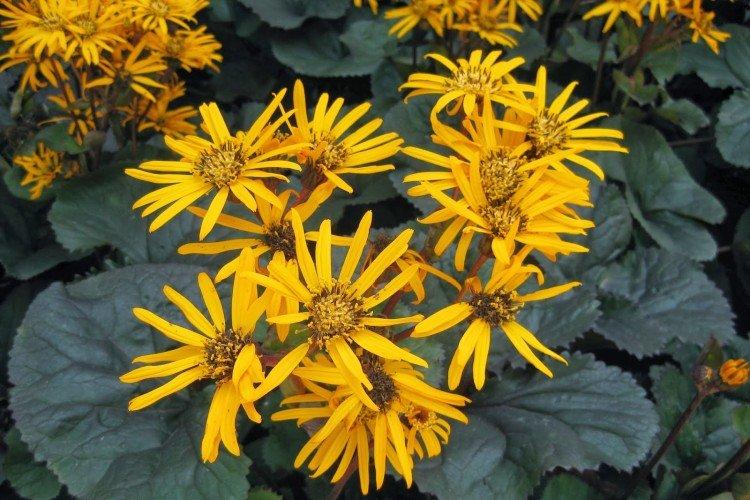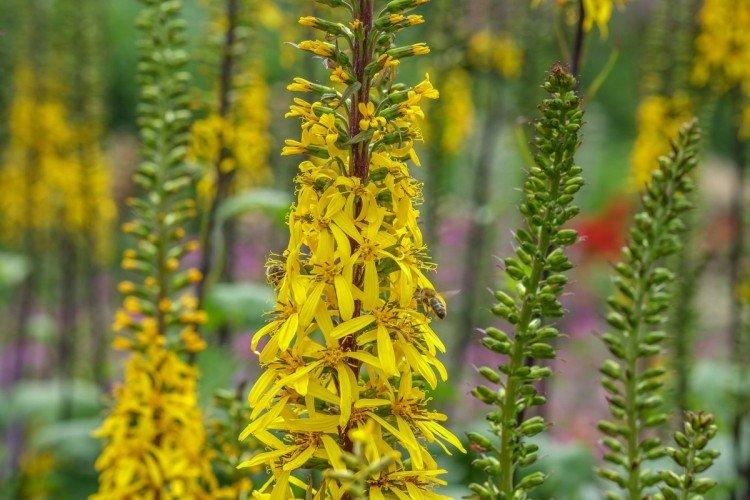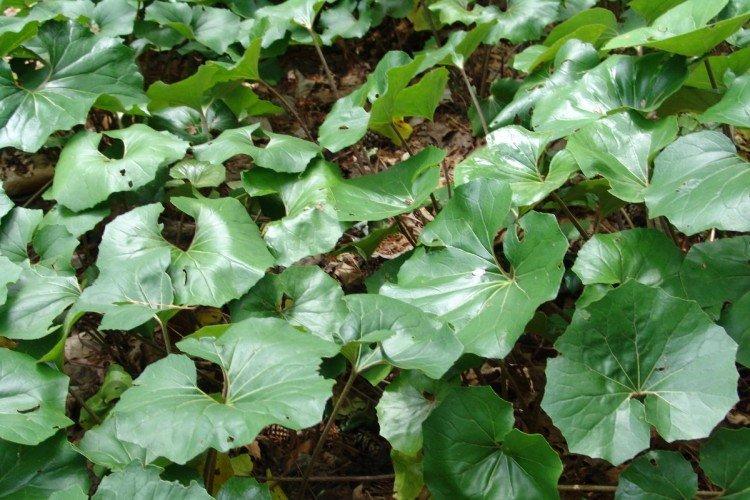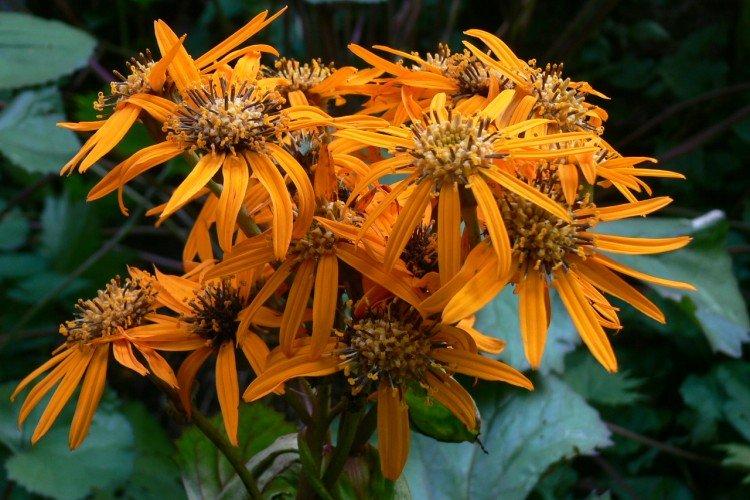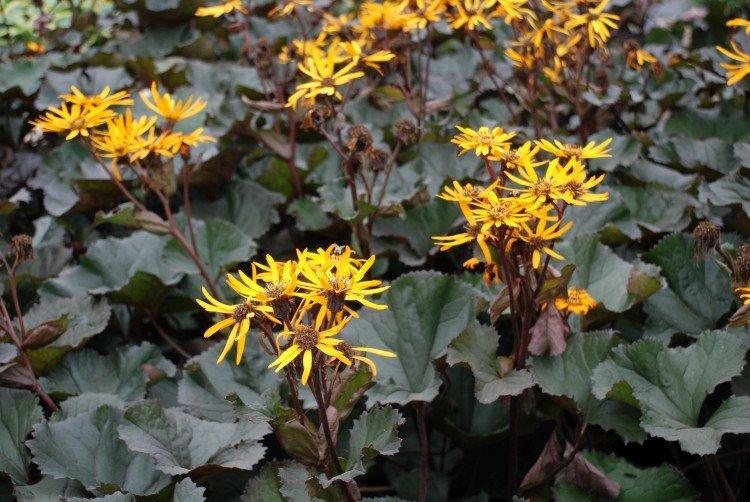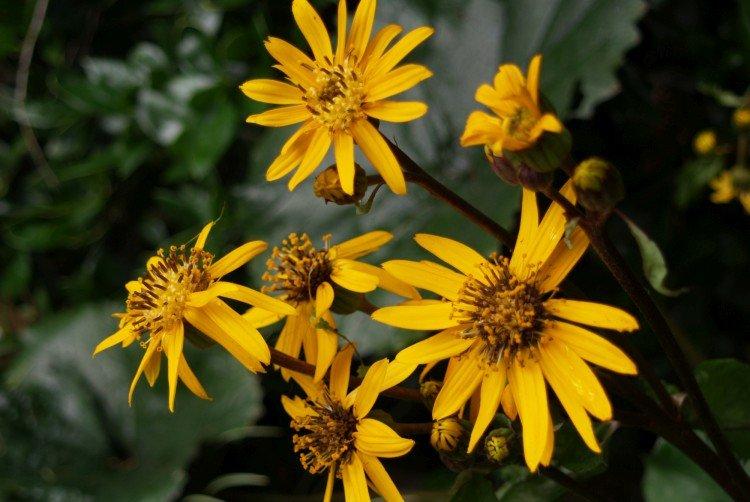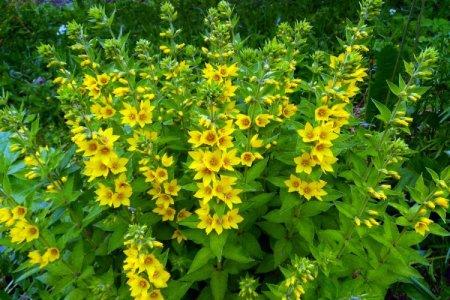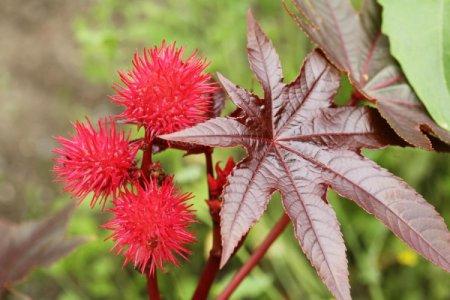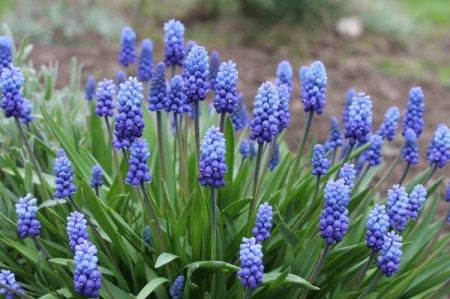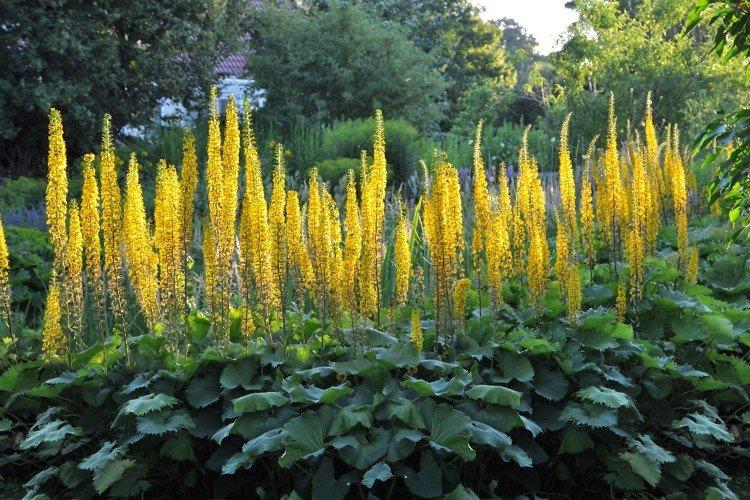
If you like more greenery and bizarre shapes of inflorescences, then Buzulnik is just your plant. It is only gaining popularity in Russia, but has already proven itself well in other countries of the world. Why is he so loved? We will tell about this further!
general information
Buzulnik or ligularia refers to herbaceous and asteric, and decorates the garden from spring to late autumn. It has large, up to 60 cm, leaves with long legs. Because of the carved edge, they slightly resemble grape or maple leaves. But there are other forms, depending on the variety.
Varieties with a mixed shade of foliage - green with purple or burgundy - look spectacular. It happens that the petioles or veins are colored differently. In addition, the buzulnik blooms very abundantly and for a long time.
Simple basket flowers are collected in complex spikelets. There are panicle inflorescences, brushes and scutes, sometimes also reddish or brownish shades. The height of the peduncles reaches 2 m. The early varieties bloom by the end of June, and the later ones - closer to September.
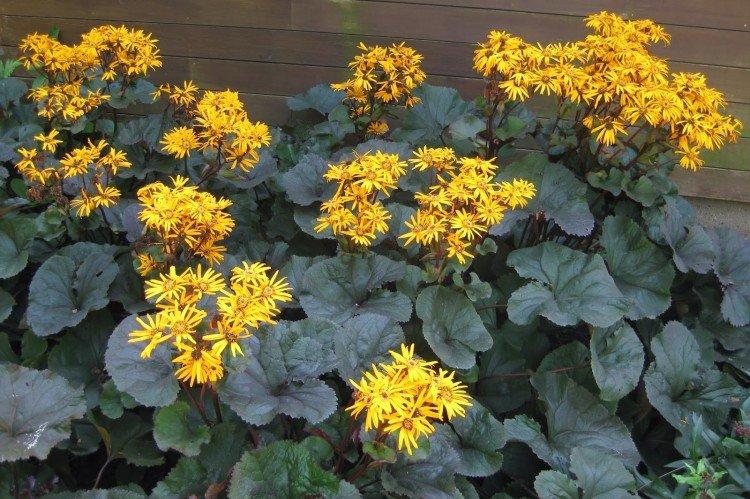
Types of buzulnik
In the whole genus, there are about 150 species of buzulnik, scattered throughout Europe, Asia and even Africa. In our latitudes, the following varieties are most relevant!
Toothed buzulnik
A very broad and varied category with long, straight stems. All subspecies have powerful serrated leaves and wide corymbose inflorescences from simple baskets up to 10 cm in diameter.
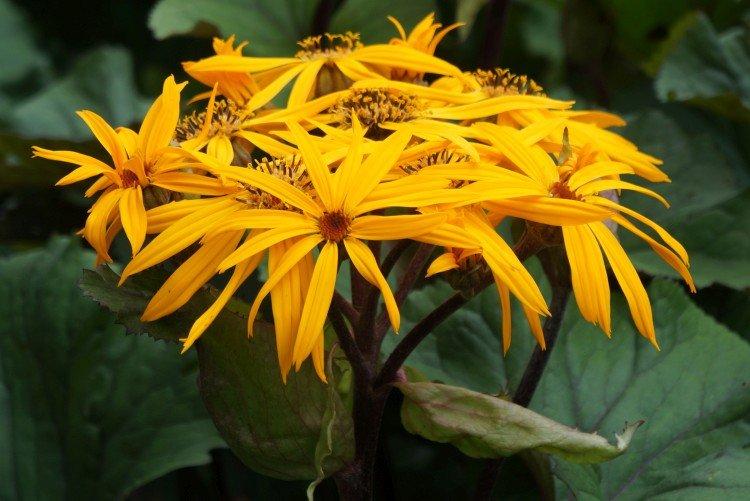
Buzulnik Wilson
Straight shoots of this winter-hardy species grow up to 1.5 m and are densely covered with large decorative leaves. Yellow heads form long, straight inflorescences.
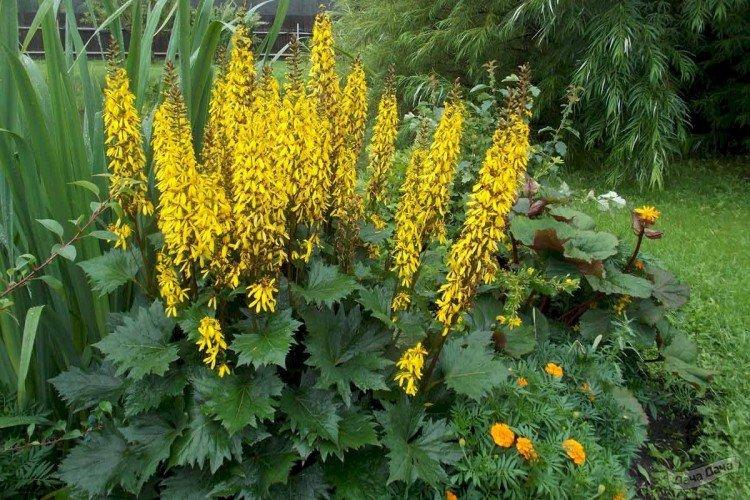
Tangut Buzulnik
An ornamental variety bred specifically for the garden. It is a tuberous variety that multiplies easily, loves shade and thrives in any soil. Shoot height - up to 1 m.
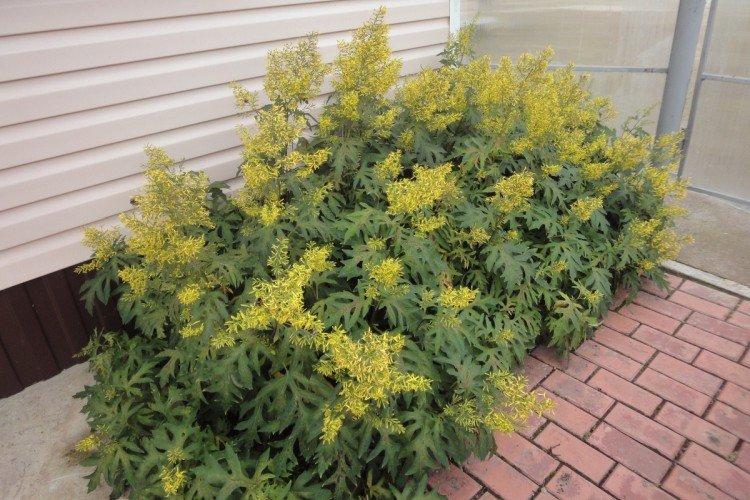
Buzulnik Przewalski
The tall and unpretentious species has adapted well to life in the middle lane. In nature, this is a resident of Mongolia with graceful spike-shaped inflorescences on tall peduncles up to 150 cm.
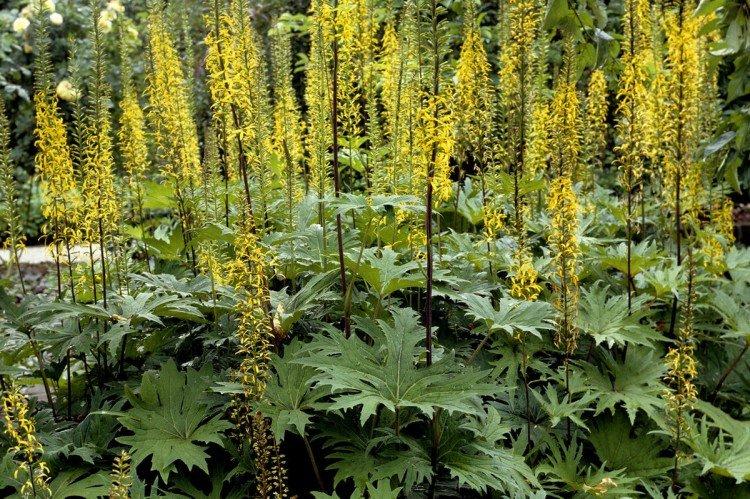
Buzulnik Vicha
The Chinese species are easily recognizable by their size - up to 2 m in height. This is a late buzulnik, which blooms in August and decorates the site almost until mid-autumn.
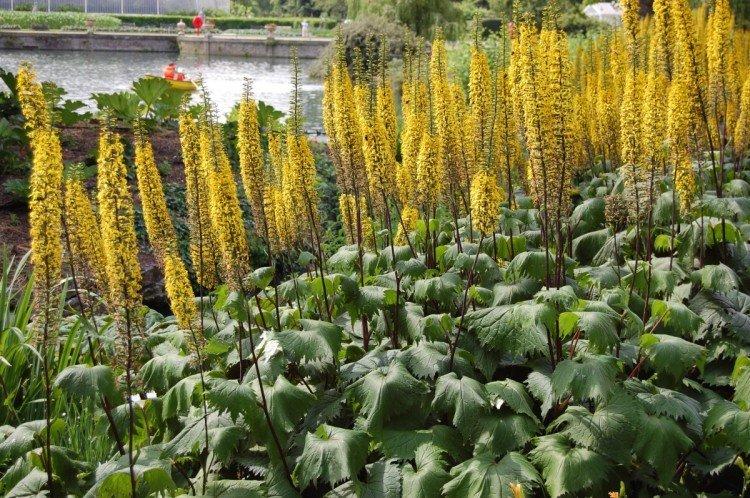
Buzulnik Vorobyova
The Far Eastern species wonderfully adapts to the most severe conditions. The bushes are not too tall, a little more than 1 m, but very powerful. Buzulnik Vorobyov is distinguished by rounded hard leaves and very bright racemose inflorescences.
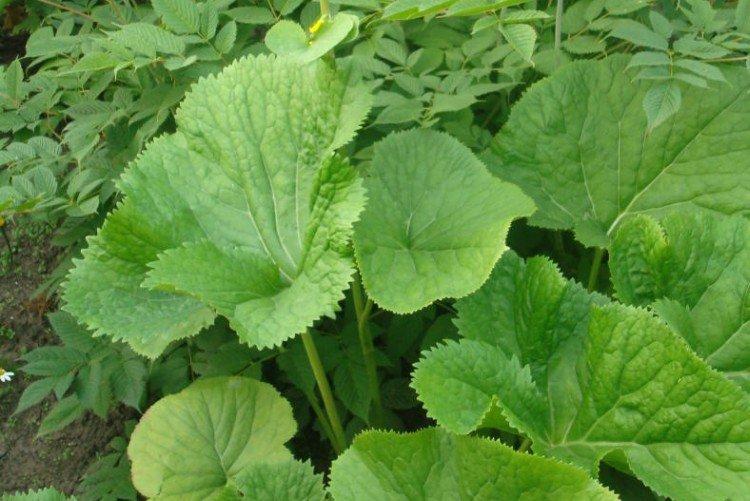
Siberian Buzulnik
Another species accustomed to a difficult life in nature lives in swamps and near water bodies. Heart-shaped leaves and ribbed stems may cast red. The height of the bushes ranges from 30 cm to 1.5 m.
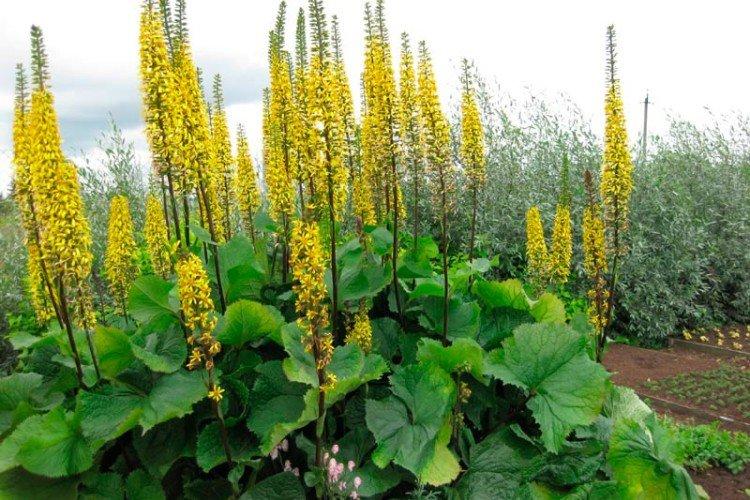
Buzulnik care
Buzulnik can be confidently called one of the most unpretentious inhabitants of the garden. It is winter-hardy, almost does not get sick and can grow in one place for 10-15 years. All that is needed for happiness in our latitudes!
Temperature
Buzulnik does not like heat and too high temperatures, so you cannot plant it under the scorching sun. Optimal conditions are around 15-20 degrees. But ligularia easily tolerates cold snaps and frosts.
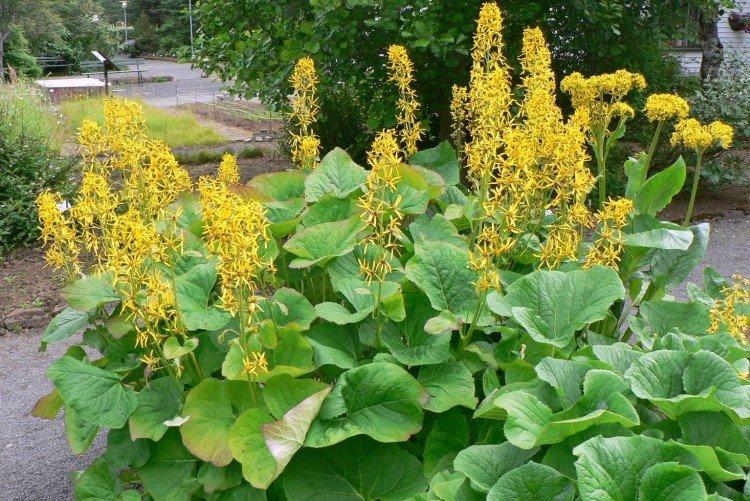
Lighting
The plant is not afraid of darkness and dampness, and this is one of its main advantages. They can safely plant shady areas where other flowers do not take root. This will not in any way affect the beauty of the succulent leaves and the splendor of the flowering.

Watering
Buzulnik needs a lot of moisture, so watering should be frequent - 2 times a week. And abundant because of the long root that goes deep into the ground. Even a short drought immediately affects the decorative effect of the leaves. In the morning or in the evening, the buzulnik can be additionally sprayed.
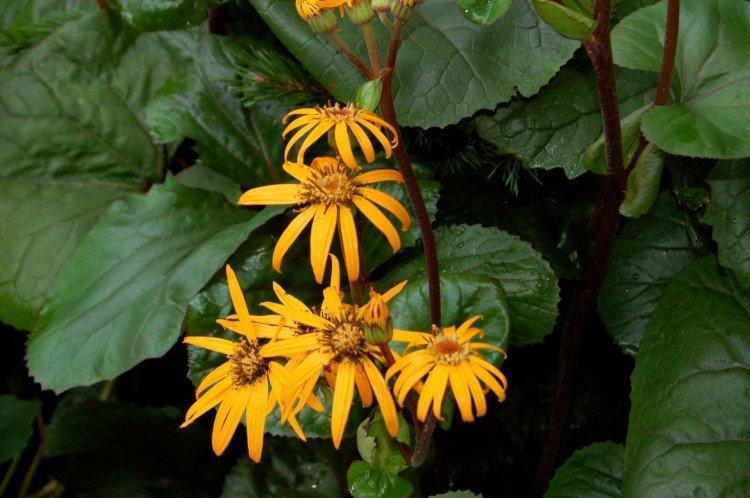
The soil
Buzulnik grows on any soil, including heavy and clayey.But the area around the plant was necessarily loosened so that the soil would allow air to pass through and be better moistened.

Fertilizers and feeding
Starting from the second year, in the spring, you can apply complex nitrogen fertilizers or organic matter. In summer, the buzulnik is fed if it grows poorly and blooms. In bad weather and temperature extremes, it is better to postpone feeding.
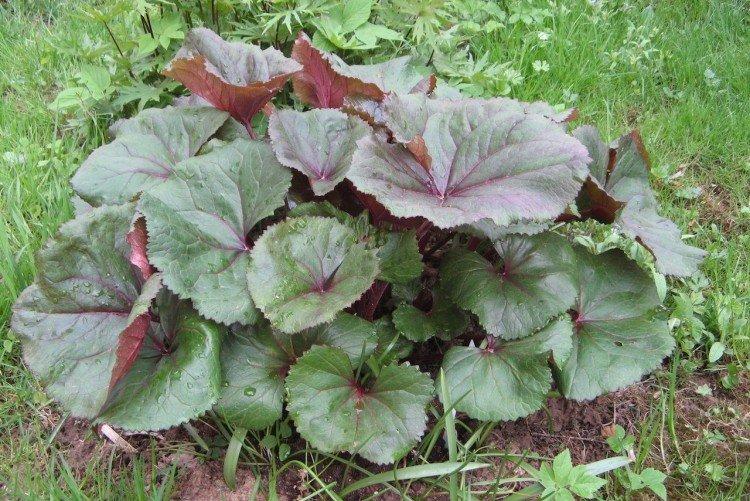
Wintering
Buzulnik is not afraid of frosts down to -25 degrees, but snowless winters are dangerous. Therefore, it is better to mulch the planting with peat or humus by about 3 cm. To do this, first cut off the ground part after flowering.

Transfer
Buzulnik for years feels great in one area, but as necessary or when the soil is depleted, it should be transplanted. We advise you to do this at least every 5 years in spring or autumn. Transplant the plant into a hole with water, water often and be patient.
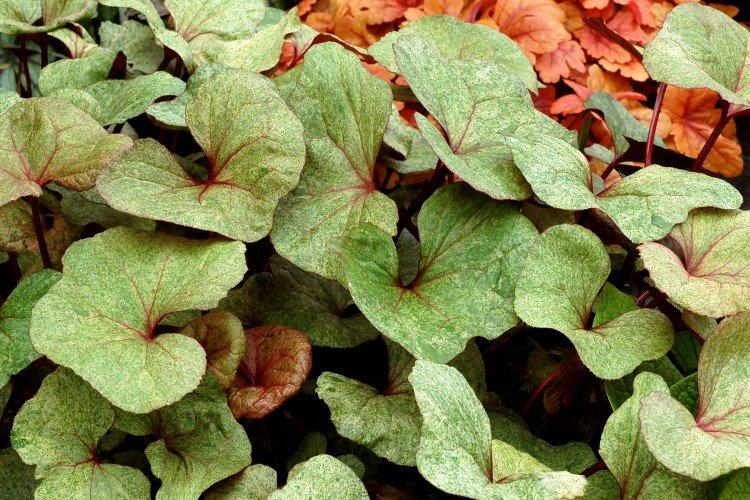
Planting and breeding
It is most convenient to propagate the buzulnik in the spring by dividing the outlet. As soon as the young leaves appear, carefully separate part of the plant with a shovel, dig up and process the cut with charcoal. This part can be transplanted in whole or divided again.
Leave a distance of about 1.5 m between the bushes, because the buzulnik grows intensively. Add a little ash, humus and superphosphates to the planting holes. Leave the buds at a distance of up to 5 cm from the ground, and in a year the young buzulnik will delight with beauty and flowering.
You can plant the buzulnik with seeds, but keep in mind that it will bloom only after 5 years. In the spring, the seeds are sown directly into the garden to a depth of 1 cm, and in the fall - deeper.
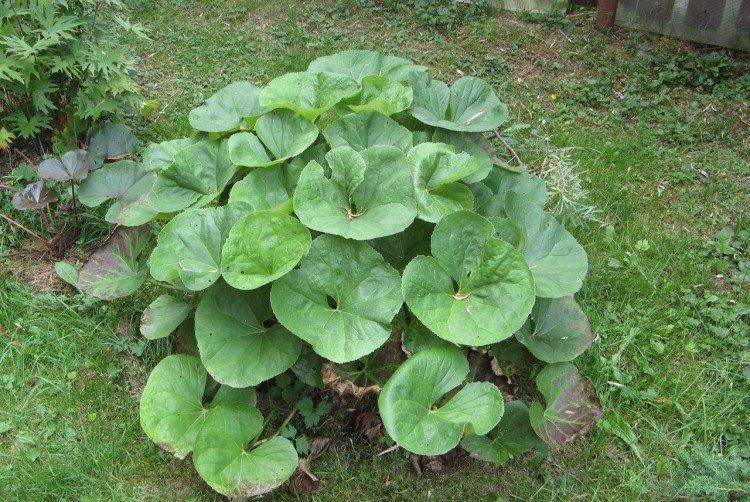
Buzulnik pests and diseases
Buzulnik has excellent immunity and increased resistance to pests and diseases due to special essential oils in the composition. Occasionally, a whitish bloom of powdery mildew appears, but potassium permanganate or fungicides help from it. The most dangerous pest for young seedlings is slugs. For prevention, it is enough to use traps and sprinkle the soil with superphosphates.
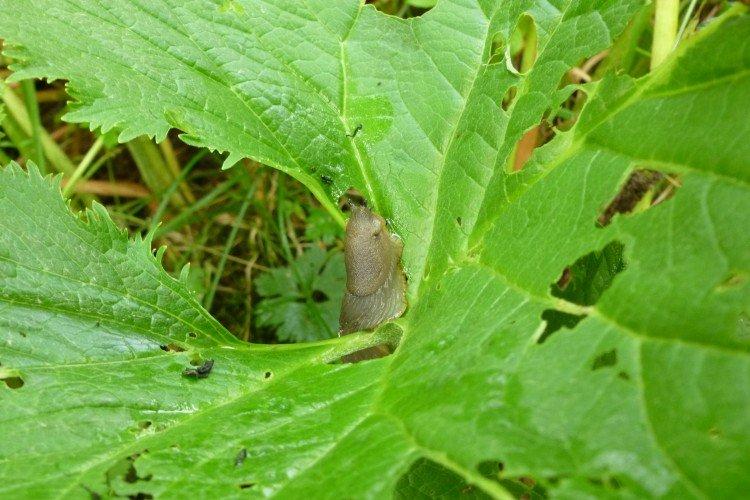
Buzulnik - photo
A tall decorative buzulnik with bright yellow candle inflorescences will be a wonderful decoration for any landscape compositions. Just look!
